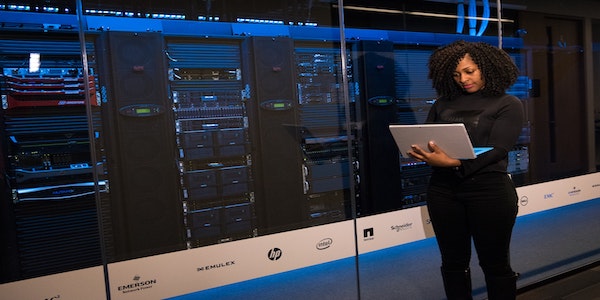This article was published as a part of the Data Science Blogathon.
Introduction

Welcome to our comprehensive guide on NoSQL databases! In this blog, we will dive deep into the world of NoSQL databases, exploring their features, advantages, and disadvantages. We will see when and why to use them and provide examples of popular NoSQL databases.
By the end of this blog, you will have a good understanding of what NoSQL databases are, how they differ from traditional SQL databases, and how to determine if a NoSQL database is the right choice for your needs. You will have practical knowledge of best practices for using NoSQL databases and some tips for migrating from a SQL database to a NoSQL database.
So if you are an experienced developer or new to the world of databases, this blog is sure to provide valuable insights and information on NoSQL databases. Let’s get started!
What are NoSQL Databases?

NoSQL databases, or “Not Only SQL” databases, do not use traditional SQL (Structured Query Language) for storing and manipulating data. They are designed to handle large amounts of data that is unstructured, semi-structured, or polymorphic in nature.
One way to think about NoSQL databases is to compare them to the cartoon character SpongeBob SquarePants. Just like SpongeBob is not just a square, NoSQL databases are not just for SQL. They are flexible and can handle different data types, just like SpongeBob can adapt to different environments and situations.
NoSQL databases are mainly good for handling big data, real-time data processing, and cloud-based applications. They often use a distributed architecture, allowing them to scale horizontally across multiple servers or nodes. This makes them perfect for handling high levels of concurrency and data volume.
Key Differences Between NoSQL and SQL Databases
- Data model: NoSQL databases often use a different data model than SQL databases. While SQL databases use a tabular data model with rows and columns, NoSQL databases can use different data models, like key-value, document, graph, or column family.
- Schema: SQL databases usually have a fixed schema, meaning the form of the data must be defined upfront and cannot be changed easily. On the other hand, NoSQL databases can have a flexible or changing schema, allowing them to store and handle data without defining the structure beforehand.
- Query language: SQL databases use the Structured Query Language (SQL) for querying and manipulating data. On the other hand, NoSQL databases may use different query languages or may not have a standardized query language.
- Scalability: NoSQL databases are designed to scale horizontally across multiple servers or nodes, making them perfect for handling large amounts of data and high levels of concurrency. On the other hand, SQL databases usually scale vertically by adding more resources to a single server.
- ACID transactions: SQL databases support ACID (Atomicity, Consistency, Isolation, Durability) transactions, which ensure that database transactions are Atomic, Consistent, Isolated, and Durable. NoSQL databases may not support ACID transactions or may support a weaker form of transactions called the BASE (Basically Available, Soft state, Eventually consistent).
Some popular examples of NoSQL databases include MongoDB, Cassandra, and Redis.
Types of NoSQL Databases

There are different types of NoSQL databases, each with its own unique features and characteristics:
- Key-value stores: Key-value stores are an easy type of NoSQL database and are designed to store large amounts of data in a flat form. Each piece of data is a key-value pair, with the key as an identifier and the value being the data itself. An example of a key-value store is Redis.
- Document databases: Document databases store data in the form of documents, which are self-contained units of data that contain both the data itself and metadata about the data. Document databases are often used for storing complex, hierarchical data structures. An example of a document database is MongoDB.
- Column-family stores: Column-family stores are a type of NoSQL database that stores data in columns rather than rows. They are often used for storing large amounts of data with a high degree of structure. An example of a column-family store is Cassandra.
- Graph databases: Graph databases store data in the form of nodes and edges, letting them represent complex relationships between data points. They are often used for analyzing and querying data with complex relationships. An example of a graph database is Neo4j.
- Multimodel databases: Multimodel databases support multiple data models, allowing them to handle different data types and use cases. An example of a multimodel database is ArangoDB.
Advantages of NoSQL Databases

Advantages of NoSQL databases over traditional SQL databases:
- Flexibility: NoSQL databases are designed to handle unstructured, semi-structured, or polymorphic data, making them more flexible than SQL databases. This allows them to store and handle data without defining the structure beforehand.
- Scalability: NoSQL databases are designed to scale horizontally across multiple servers or nodes, making them perfect for handling large amounts of data and high levels of concurrency.
- Performance: NoSQL databases are often faster than SQL databases when handling large amounts of data or high levels of concurrency. This is because they use a distributed architecture and often use a different data model than SQL databases.
- Easy to use: NoSQL databases are often easier to use than SQL databases, especially for developers who are new to databases. They often have simple, easy-to-use APIs and do not need a deep understanding of SQL.
- Cloud-friendly: NoSQL databases are perfect for cloud-based applications since they can easily scale and handle large amounts of data in a distributed environment.
- Cost-effective: NoSQL databases are often more cost-effective than SQL databases, especially when handling large amounts of data. This is because they don’t need many hardware upgrades to handle more data; instead, they may grow horizontally across several servers or nodes.
Disadvantages of NoSQL Databases

NoSQL DBs also have different disadvantages compared to traditional SQL databases:
- Limited querying and indexing: NoSQL databases may not support as powerful or as flexible querying and indexing capabilities as SQL databases. This can make it more difficult to perform certain types of queries or to search for specific data.
- Limited ACID transactions: Some of these databases may not support ACID (Atomicity, Consistency, Isolation, Durability) transactions or may support a weaker form of transactions called the BASE (Basically Available, Soft state, Eventually consistent). This can make it more difficult to ensure the integrity and consistency of data in a NoSQL database.
- Lack of standardization: NoSQL databases often have different data models, query languages, and APIs, which can make it more difficult to work with multiple NoSQL databases or to switch between them.
- Limited vendor support: NoSQL databases may have limited vendor support compared to SQL DBs since smaller companies or open-source communities often develop them. This can make it more difficult to get help or support if you face issues with your NoSQL database.
- Complexity: NoSQL databases can be more complex to set up and maintain than SQL databases, especially for developers who are new to databases. This can increase the learning curve and need more time and resources to get up and running with a NoSQL database.
Use Cases for NoSQL Databases

NoSQL databases are perfect for different use cases, including:
- Big data: NoSQL databases are perfect for handling large amounts of data since they can scale horizontally across multiple servers or nodes and handle high levels of concurrency.
- Real-time data processing: They are often used for real-time data processing since they can handle high levels of concurrency and support low latency.
- Cloud-based applications: NoSQL databases are perfect for cloud-based applications since they can easily scale and handle large amounts of data in a distributed environment.
- Mobile applications: NoSQL databases are often used for mobile applications since they can support offline operations and handle high levels of concurrency.
- Internet of Things (IoT): These databases are often used for IoT applications since they can handle large amounts of data from a large number of devices and handle high levels of concurrency.
- Content management: NoSQL databases are often used for content management systems since they can handle large amounts of data and support flexible data models.
- Social media: NoSQL databases are often used for social media applications since they can handle high levels of concurrency and support flexible data models.
- E-commerce: They are often used for e-commerce applications since they can handle high levels of concurrency and support flexible data models.
Examples of NoSQL Databases
Here are some examples of popular NoSQL databases:
- MongoDB: MongoDB is a document database that uses JSON-like documents to store data. It is perfect for storing complex, hierarchical data structures and is often used for content management systems and mobile applications.
- Cassandra: Cassandra is a column-family store that is designed to handle large amounts of structured data. It is often used for real-time data processing and is perfect for handling high levels of concurrency.
- Redis: Redis is a key-value store that is designed to handle large amounts of data with a high degree of structure. It is often used for real-time data processing and is perfect for handling high levels of concurrency.
- Neo4j: Neo4j is a graph database that is designed to represent complex relationships between data points. It is often used for analyzing and querying data with complex relationships and is perfect for handling large amounts of data.
- ArangoDB: ArangoDB is a multimodel database that supports multiple data models, including documents, graphs, and key-value pairs. It is often used for handling large amounts of data and is perfect for cloud-based applications.
How to Choose the Right NoSQL Database for Your Needs
There are a few important factors to consider when choosing the right NoSQL database for your needs:
- Data model: Consider the type of data you will be storing and the types of queries you will need to perform. Different NoSQL databases use different data models, so choose one that fits your needs. For example, a document database like MongoDB may be a good choice if you need to store complex, hierarchical data structures.
- Scalability: Consider how much data you expect to store and how much concurrency you expect to handle. NoSQL databases are designed to scale horizontally, so choose one that can handle your expected workload.
- Performance: Consider the performance requirements of your application. These databases are often faster than SQL databases when handling large amounts of data or high levels of concurrency. However, be sure to use different benchmark databases to find the best performance for your needs.
- Ease of use: Consider the level of experience your development team has with databases. Some NoSQL databases may be easier to use than others, especially for developers who are new to databases.
- Vendor support: Consider the level of vendor support available for the NoSQL database you are considering. This can be especially important if you face issues with your database or need help setting it up.
- Cost: Consider the costs associated with these database you are considering. Some NoSQL databases are open-source and free to use, while others may have licensing fees or other associated costs.
Best Practices for Using NoSQL Databases
Here are some best practices for using NoSQL databases:
- Understand your data model: Make sure you understand the data model of your NoSQL database and how it differs from a traditional SQL database. This will help you design your data structures and write queries in a way that is optimized for the database.
- Use the right data model for your needs: Choose the data model that best fits your needs. Different data models are better suited for different types of data and queries, so be sure to choose one that fits your needs.
- Use indexing wisely: Indexing can improve the performance of your NoSQL database, but be sure to use it wisely. Over-indexing can lead to poor performance, so be sure to only index the data that you need to query frequently.
- Use the right consistency model: NoSQL databases often have different consistency models, so choose one that fits your needs. For example, if you need strong consistency, you may want to choose a database that supports ACID transactions.
- Test and benchmark: Be sure to test and benchmark your NoSQL database to ensure it is performing well and meeting your needs. This will help you identify any issues or bottlenecks and take corrective action.
- Use a load balancer: If you are using a distributed NoSQL DB, consider using a load balancer to distribute traffic evenly across your nodes. This can help improve performance and reduce the risk of overloading a single node.
- Monitor and maintain: Monitor your NoSQL database for performance and availability and perform regular maintenance to keep it running smoothly. This can help prevent issues and ensure that your database is always available when you need it.
Migrating From a SQL Database to a NoSQL Database
Migrating from a SQL database to a NoSQL database can be a complex process, but there are a few steps you can take to make it as smooth as possible:
- Evaluate your needs: Before you begin the migration process, take the time to evaluate your needs and determine if a NoSQL database is the right choice for your application. Consider factors like the type of data you will be storing, the performance requirements of your application, and the level of experience your development team has with databases.
- Choose the right NoSQL database: Once you have decided to migrate to a NoSQL database, take the time to research and compare different options to find the one that best fits your needs. Consider factors like the data model, scalability, performance, ease of use, vendor support, and cost.
- Plan your migration: Carefully plan out your migration process to minimize disruption and ensure a smooth transition. This may involve creating a timeline, identifying any dependencies or challenges, and determining the order in which you will migrate different data sets or tables.
- Test and benchmark: Be sure to test and benchmark your database to ensure it is performing well and meeting your needs. This will help you identify any issues or bottlenecks and take corrective action before going live.
- Migrate your data: Once you are ready to migrate your data, you will need to export your data from your SQL database and import it into your NoSQL database. This may involve writing custom scripts or using tools provided by the NoSQL database vendor.
- Update your application: Once your data has been migrated, you will need to update your application to use the NoSQL database. This may involve updating your database connection strings, changing your SQL queries to use the NoSQL database’s query language, and possibly making other changes to your application code.
- Monitor and maintain: Once your migration is complete, be sure to monitor your NoSQL database for performance and availability, and perform regular maintenance to keep it running smoothly. This can help prevent issues and ensure that your database is always available when you need it.
Future of NoSQL Databases
The future of NoSQL databases looks bright since they continue to gain popularity and adoption in different industries. Here are a few trends that are plausible to shape the future of NoSQL databases:
- Increased adoption: As more companies recognize the benefits of NoSQL databases, it is possible that we will see increased adoption of these databases across different industries.
- Improved performance: As these databases continue to evolve, we may see performance improvements, particularly when it comes to handling large amounts of data and high levels of concurrency.
- Enhanced security: As more sensitive data is stored in these databases, we may see an emphasis on improving security in these databases. This may include the development of new security features or the integration of existing security technologies.
- Increased interoperability: Since the number of these databases continues to grow, we may see increased interoperability between different databases. This may involve developing standards or using tools that allow different databases to work together seamlessly.
- Greater integration with other technologies: We may see increased integration between NoSQL databases and other technologies, like artificial intelligence, machine learning, and the Internet of Things (IoT). This will allow companies to leverage the power of these technologies to gain insights and make better decisions.
Conclusion
NoSQL databases or “Not Only SQL” databases do not use traditional SQL (Structured Query Language) for storing and manipulating data. They are designed to handle large amounts of unstructured, semi-structured, or polymorphic data and are perfect for handling big data, real-time data processing, and cloud-based applications. It has databases, including key-value stores, document databases, column-family stores, graph databases, and multimodel databases.
Here are some main points to remember about NoSQL databases:
- NoSQL databases have different advantages, like flexibility, scalability, performance, ease of use, and cost-effectiveness.
- They have some disadvantages, like limited querying and indexing capabilities, ACID transactions, a lack of standardization, vendor support, and complexity.
- These databases are perfect for use cases, including big data, real-time data processing, cloud-based applications, mobile applications, the Internet of Things (IoT), content management, social media, and e-commerce.
- Some popular NoSQL databases include MongoDB, Cassandra, Redis, Neo4j, and ArangoDB.
- When choosing a NoSQL database, consider factors like the data model, scalability, performance, ease of use, vendor support, and cost.
The media shown in this article is not owned by Analytics Vidhya and is used at the Author’s discretion.





